It has been great getting involved with the American Medical Association’s Physician Innovation Network. This is not your stodgy old healthcare conference here. It is a community of emerging providers, physicians, companies and entrepreneurs working to make healthcare better for patients. After a call with Stacy Lloyd over the summer, learning of her pubic health and patient centered focus, I thought, these are my people.
The AMA’s report on Digital Health from 2016 really dug in to physician’s inclinations towards large scale adoption of digital health products. The overarching themes are still being explored. They include:
- Does it work? (How have outcomes been assessed?)
- Will I be liable? (Will My Malpractice carrier cover this work?)
- How will I get paid? (What’s the business model?)
- Will it work in MY practice? (For whom is this innovation intended?)
The American Medical Association’s Innovation Network is really digging into these questions with expert panels, webinars and beyond. I would suggest every forward thinking physician who wants to charge into value based care get an account and join in on the conversation.
I can feel an ebook coming on here, because at PreventScripts our team has deeply delved into these four questions in our product design. We help providers help patients get better faster. We partner with providers to address obesity and pre-disease in a new and exciting way. Proactively.
One of Stacy’s recent questions on the Network was "Will I receive payment? Demystifying cost and coverage for digital health products" How is coding and pricing for digital health products and services determined?"
Because we have been studying this extensively lately, I provided my perspective:
“Two questions with two distinct answers!
Great question for providers! I'd like to address each separately. With respect to coding, individual payer sites for "authorization lookup" can be a good resource to find out general information about which billing codes accomplished with implementation of a digital health product will be reimbursed. The 'rubber hits the road" however with the individual provider's contracted fee schedule. It is the actual contract with the payer which determines payment. The ultimate test of reimbursement is with a short term "demonstration project" in which the product is implemented in a clinic/hospital and the money hits the practice’s bank account, preferably electronically and within 14 days.
Pricing for digital health products is a separate issue. There are a variety of pricing models which depend on the features of the product, integrations, and specific outcomes attained with the product. Some digital health companies price in a revenue-sharing model. Many of us price our products in a SAAS model. SAAS models can be per patient, or they can be per provider. Tiered SAAS pricing is common as it makes sense for a 2000 provider employed physician group using Epic to pay less per provider than say a 7 provider private practice. Ultimately digital health products should provide a specific return on investment. In the short run, return on investment should be realized within 180 days for a practice.
The dependencies on return on investment are multiple and are as follows:
- The physician user target of the digital health product. (Is this a product for ALL physicians to use? Or is this a specific product for a specific kind of physician)
- How you stratify your patient population based on incidence of disease. (Is this an intervention for a specific patient group? or is this a "portal" for the general use of all patients")
- Custom Features (Want your practice or health system logo? Adds cost but worth asking for if you are a larger organizations with a branded Health IT strategy)
- Integrations with EHR. (Integrations take 12 to 16 weeks and adds cost. Here is where scale is possible, with data access for an entire health system) “
As of this writing, there are currently 2500 Physicians and 1300 Entrepreneurs in the AMA’s physician innovation network. More on the AMA’s Physician Innovation Network here.
Natalie Hodge MD
Chief Medical Officer
PreventScripts





